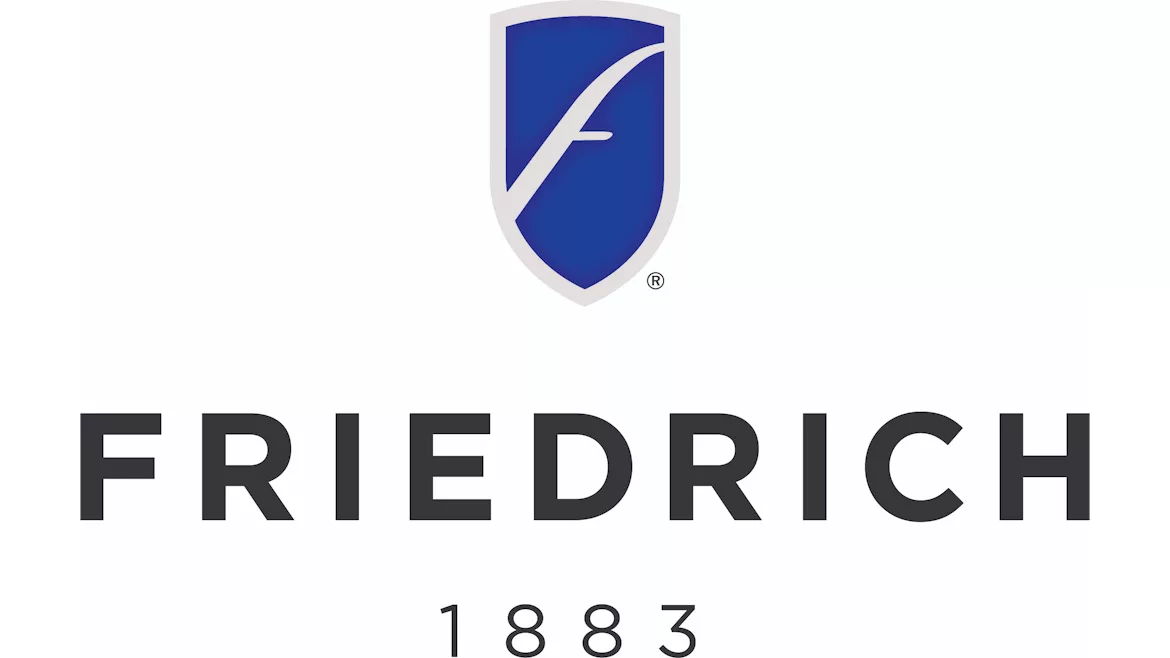You just noticed the little red light on your furnace blinking, and now you’re wondering if something’s wrong. That furnace light blinking isn’t random—it’s your system’s way of telling you what’s happening inside. Depending on the pattern, that blinking red light on your furnace could mean something simple, like a minor reset, or something more serious that needs attention before your heat shuts off completely. You don’t want that, so let’s get this figured out quickly!
In this blog from Doc Dancer Plumbing, Heating, AC & Generators, we’ll share what furnace blinking lights mean and when it’s time to call a professional like us for help.
What Does It Mean When a Furnace Red Light Stays On?
If you see a red light on the furnace coming from the small viewing window on the front panel, that light is part of the control board inside the unit. It’s meant to show what your furnace is doing or what’s gone wrong. When that red light stays on instead of blinking, it can mean a few different things depending on your furnace model. In some cases, it’s normal. In others, it means the furnace has stopped itself from running because something isn’t working correctly.
Here are the most common reasons a solid red light on furnace systems might appear:
- Normal Operation: On some furnaces, a steady red light simply means the system has power and is standing by to run.
- Lockout Mode: If the furnace has tried to start several times and failed, it can enter a safety lockout. The solid light will stay on until the problem is fixed and the system is reset.
- Control Board Issue: The control board manages ignition, airflow, and safety sensors. If it malfunctions, the red light might stay on even though the furnace isn’t responding.
- Electrical Problem: A tripped breaker, blown fuse, or loose connection can keep power to the control board but stop the furnace from running.
If your furnace isn’t producing heat and the red light remains solid, it often means something in the startup or safety sequence isn’t completing. After checking your filter and power switch, it’s best to have an HVAC technician inspect the system to find out why the light is staying on.
Why is My Furnace Light Blinking?
Similarly, when you notice your furnace light blinking, it’s your heating system’s built-in diagnostic tool saying something. The indicator light on your furnace’s control board communicates specific furnace error codes through different colored flashing lights. These codes help identify what’s working properly and what isn’t.
Red Blinking Light
A furnace blinking red light is the most common signal homeowners see. Depending on how many times it flashes, this light can point to several different problems within the heating system.
Common causes include:
- Flame Failure: The flame sensor isn’t detecting a flame, often because it’s dirty or worn out.
- Faulty Igniter: A weak or cracked igniter may prevent the burners from lighting properly.
- Gas Supply Issue: Low gas pressure or a faulty gas valve can keep the burners from firing.
- Airflow Restriction: A clogged furnace filter or blocked vent can limit proper airflow, causing the high limit switch to trip, signaling the furnace to shut down.
- Control Board Malfunction: The circuit board failure can cause false error signals or prevent the ignition sequence from completing.
- Loose Wires: Electrical connections inside the furnace can loosen over time, disrupting power to ignition or safety sensors.
A furnace flashing red light usually means something in the ignition or flame detection process isn’t happening correctly. If your furnace tries to fire multiple times and fails, it’s best to have a professional HVAC technician take a look.
Yellow Blinking Light
A blinking yellow light is less common but can also indicate specific warning signs within your heating system. In most furnaces, a yellow light relates to ignition, flame sensing, or gas flow problems.
Common causes include:
- Dirty Flame Sensor: A buildup on the flame sensor can stop it from recognizing a flame even when the burners are on.
- Gas Valve Malfunction: A faulty gas valve or inconsistent gas pressure may cause the pilot or burners to light inconsistently.
- Ignition System Failure: A weak spark or damaged igniter prevents the furnace from lighting on the first try.
- Poor Ventilation or Draft Issues: Improper airflow or blockages can trigger a yellow light due to incomplete combustion.
- Control Board Communication Error: When the furnace’s control board isn’t reading the sensors correctly, it can flash a yellow code to signal a logic fault.
Because a blinking yellow light can point to a gas or ignition problem, it’s safest to turn the system off and call a furnace company before running it again.
Green Blinking Light
A green indicator light often shows normal operation, but under certain conditions, it can also represent a fault. The key is how fast it’s blinking and whether your furnace is running properly.
Common causes include:
- Blower Motor Issue: If the blower motor doesn’t start, the control board may blink green rapidly to indicate a circulation problem.
- High Limit Switch Triggered: Overheating caused by a blocked vent or dirty air filter can cause a fast green flash.
- Heat Exchanger Problem: A cracked heat exchanger can cause safety sensors to trigger, signaling a warning with the green light.
- Circuit Board Failure: A failing circuit board may cause irregular or rapid blinking that doesn’t match standard codes.
A slow furnace green light blink usually means the unit has power and is waiting for a heat call. For everything else, it’s best to talk to a technician.
Furnace Troubleshooting and Common Furnace Error Codes
Every furnace brand uses its own version of furnace error codes, kind of like a built-in Morse code. The blinking patterns and light colors can differ between models, so there isn’t one single chart that applies to every furnace.
Your best first step for furnace troubleshooting is to check your owner’s manual. Most manuals have a section that lists furnace fault codes, explains the light patterns, and gives the exact meaning of each one. If you don’t have the printed manual anymore, you can usually find a digital copy online—just search for your furnace’s brand and model number.
To make things easier, here’s a quick overview of what some of the most common brands—Carrier, Bryant, Lennox, Trane, and Rheem—use for their code chart systems and what those blinking lights often mean.
Carrier Furnace Codes
Carrier uses a red LED system that flashes in patterns to show the furnace’s operating status and any faults.
- Steady Red Light: Normal operation with power on.
- 1 Flash: Ignition failure—the burners didn’t light or the flame sensor didn’t detect a flame.
- 2 Flashes: Pressure switch problem—vent or drain blockage affecting airflow.
- 3 Flashes: Limit switch open—possible overheating or restricted airflow from a dirty filter.
- 4 Flashes: Ignition sequence failure—may involve the igniter or gas valve.
- Rapid Continuous Flashing: Electrical or control board problem.
Bryant Furnace Codes
Bryant systems use similar lights and codes as Carrier because the two brands are made by the same parent company. The number and speed of red flashes correspond to specific problems inside the system.
- Steady Light: Furnace powered and ready.
- 1 Flash: Ignition or flame sensor problem.
- 2 Flashes: Pressure switch stuck open or closed—possible vent or hose issue.
- 3 Flashes: Limit switch triggered—restricted airflow or overheating.
- 4 Flashes: Ignition fault—may be caused by a weak igniter or gas supply issue.
- Continuous Flashing: Electrical or polarity issue on the control board.
Lennox Furnace Codes
Lennox furnaces often use two lights—red and green—to display furnace error codes. Together, they create combinations that help identify specific problems.
- Steady Green: Furnace has power and is operating normally.
- Slow Green Flashing: System is powered but waiting for a call for heat.
- 2 Red Flashes: Pressure switch stuck open—possible vent blockage or airflow problem.
- 3 Red Flashes: Limit or rollout switch open—furnace may be overheating due to a dirty filter or blocked vent.
- 4 Red Flashes: Ignition failure—could involve the igniter, gas supply, or flame sensor.
- Alternating Red and Green Lights: Wiring or polarity issue—check the power connections.
- No Lights: Furnace has lost power or the control board isn’t receiving voltage.
Trane Furnace Codes
A Trane furnace communicates using a red LED that flashes in distinct patterns, often mixing short and long blinks.
- Steady Light: System has power and no faults.
- 2 Flashes: Pressure switch problem—vent or condensate issue.
- 3 Flashes: Flame not detected—possible dirty flame sensor or ignition problem.
- 4 Flashes: High limit switch open—overheating caused by restricted airflow or a clogged air filter.
- 5 Flashes: Flame detected when no call for heat—possible faulty gas valve or control board issue.
- Continuous Flashing: Voltage or circuit board failure.
Rheem Furnace Codes
Rheem furnaces also use a single LED to show their furnace error codes, with a steady or flashing pattern.
Common Rheem furnace codes include:
- Steady Light: Normal power and standby mode.
- 1 Flash: Ignition failure—could be the pilot light, igniter, or gas issue.
- 2 Flashes: Pressure switch fault—vent pipe or drain blockage.
- 3 Flashes: Limit switch open—airflow blocked or furnace filter clogged.
- 4 Flashes: Flame not sensed—dirty or bad flame sensor.
- 5 Flashes: Gas valve fault or inconsistent gas pressure.
Each furnace has its own language. While these charts give you a starting point, your owner’s manual remains the best resource for finding the right meanings and reset instructions for your system.
For many issues, you can clear the code by turning the furnace’s power switch off for about 30 seconds, then turning it back on to allow the system to reset. If the light comes back or the furnace still won’t run, call us for further assistance so the problem can be diagnosed safely.
Repair and Maintenance Services to Fix Furnace Red Light Blinking
If you see that furnace blinking red light, don’t ignore it—many problems start small and can be fixed quickly if caught early. Doc Dancer specializes in heating repair for all major makes and models, including Carrier, Bryant, Trane, and more. We’ll inspect the system, find the cause, and make the right furnace repair so your home warms up again quickly.
Keeping up with furnace maintenance is just as important as fixing problems when they appear. Regular tune-ups help prevent the very issues that cause those blinking lights in the first place.
If your furnace has been running longer to heat your home or that red light keeps returning, it’s time to schedule a service visit.
Call Doc Dancer to Fix Your Furnace Today
If your furnace light blinking has you wondering what’s wrong, the safest move is to have it looked at before a small issue turns into a bigger one. Because when that light is blinking, there’s a really good chance that something isn’t functioning properly. And that something can damage your system further or even cause safety concerns for your family.
Instead of trying to diagnose it yourself, schedule a professional system check with Doc Dancer Plumbing, Heating, AC & Generators. Our technicians will inspect every part of your furnace, find the source of the problem, and make sure it’s running safely.
We proudly serve Fort Wayne and nearby communities, including Auburn, Columbia City, Huntertown, Huntington, and New Haven. Call today or schedule your furnace repair appointment online to get your heat back on and your home comfortable again!
Frequently Asked Questions
Why is the red light on my furnace blinking?
A blinking red light on your furnace is part of its built-in diagnostic system. The control board uses light patterns to show what’s happening inside—anything from a normal heating cycle to a part that isn’t working right. Counting the flashes helps determine what area of the furnace needs to be checked or repaired.
Why is my furnace light blinking continuously?
If the furnace light is blinking continuously, it usually means the control board has detected an active fault that hasn’t been cleared. This could be caused by an ignition failure, airflow restriction, or safety switch issue. A continuous blink means the furnace won’t restart until the problem is resolved or the system is reset.
What does a solid red light on my furnace mean?
A solid red light can indicate that the furnace has locked itself out after repeated failed ignition attempts or detected a serious fault. On some models, however, it just shows that the furnace has power. If the system isn’t heating while that light stays solid, it likely needs professional inspection.
What does the Lennox furnace red light mean?
On a Lennox furnace, a flashing red light signals a specific problem, while a steady green light usually means normal operation. Each number of red flashes corresponds to a certain fault—like a pressure switch, ignition, or flame sensor issue. The best way to interpret it is to match the flashes with the code chart for your Lennox model.
Can I reset a blinking furnace light myself?
In many cases, you can try resetting the furnace by switching off the power for about 30 seconds and turning it back on. If the light clears and the furnace starts heating, it may have just needed a simple reset. But if the furnace light blinking returns right away, there’s an underlying issue that needs to be addressed by HVAC professionals.
Whether you require installation, repair, or maintenance, our technicians will assist you with top-quality service at any time of the day or night. Take comfort in knowing your indoor air quality is the best it can be with MOE heating & cooling services Ontario's solution for heating, air conditioning, and ventilation that’s cooler than the rest.
Contact us to schedule a visit. Our qualified team of technicians, are always ready to help you and guide you for heating and cooling issues. Weather you want to replace an old furnace or install a brand new air conditioner, we are here to help you. Our main office is at Kitchener but we can service most of Ontario's cities
Source link



